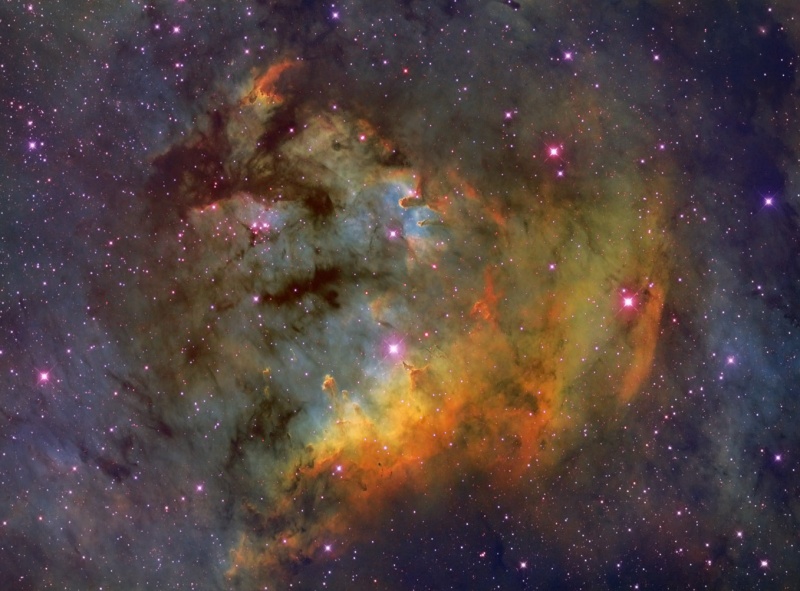
|
Credit & Copyright: Antonio Fernandez
Explanation:
Cosmic pillars of cold
molecular gas and clouds of dark dust
lie within Sharpless 171, a star-forming region
some 3,000 light-years away in the royal constellation
Cepheus.
This tantalizing false-color skyscape
spans about 20 light-years across
the nebula's bright central region.
It also highlights the pervasive glow of
emission
from atomic gas using narrowband filters and a
color palette made
popular in Hubble Space Telescope images.
Powering the nebular
glow are the young, hot stars of
a newly formed cluster, Berkeley 59.
Of course, this star-forming region is
entry
number 171 in
the famous 1959 catalog of emission nebulae compiled by astronomer
Stewart Sharpless.
|
January February March April May June July August September October November December |
| ||||||||||||||||||||||||||||||||||||||||||||||||
NASA Web Site Statements, Warnings, and Disclaimers
NASA Official: Jay Norris. Specific rights apply.
A service of: LHEA at NASA / GSFC
& Michigan Tech. U.
Based on Astronomy Picture
Of the Day
Publications with keywords: star formation - open cluster
Publications with words: star formation - open cluster
See also:
- APOD: 2025 August 7 B The Double Cluster in Perseus
- APOD: 2025 July 10 B Lynds Dark Nebula 1251
- APOD: 2025 June 23 B W5: Pillars of Star Formation
- APOD: 2025 April 28 B Gum 37 and the Southern Tadpoles
- APOD: 2025 March 26 B Star Formation in the Pacman Nebula
- Open Star Clusters M35 and NGC 2158
- APOD: 2025 February 25 B M41: The Little Beehive Star Cluster
